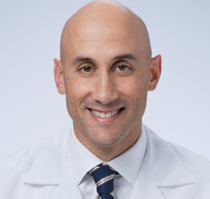Molecular Mechanisms of Endothelial Dysfunction in Patients with Treated HIV Infection

Abstract
Atherosclerosis is more common in HIV-infected individuals and manifests at an earlier age. Loss of endothelial cell (EC) function increases the cardiovascular risk. A key vasoprotective molecule released by healthy endothelium is nitric oxide (NO) produced by endothelial nitric oxide synthase (eNOS).
Objective: To determine if and how NO bioavailability is altered in ECs of HIV-infected subjects on virally suppressed therapy.
Design/Duration: During the next year, we will extend our understanding of HIV-related EC dysfunction and atherogenesis with a novel technique to collect human ECs to determine the intracellular mechanisms of NO bioavailability and the dysfunctional EC phenotype. In Aim 1, we will test the hypothesis that the EC NO synthetic and degratory pathways is less active in HIV patients on virally suppressive therapy by using quantitative immunostaining to compare the expression and activation of eNOS to uninfected subjects. Furthermore we will use immunostaining to measure the expression and activation of PI3-Akt, a known regulator of eNOS. In addition, we will determine which HIV-related characteristics are associated with eNOS expression and activation. We will test the hypothesis that NO bioavailability is reduced by enhanced degradation from excess superoxide free radicals by immunostaining for EC nitrotyrosine in HIV-infected individuals. We will determine which HIV-related characteristics are associated with EC nitrotyrosine formation. In Aim 2, we will test the hypothesis that the physiological correlate of reduced NO synthesis and enhanced NO inactivation (Aim 1) is impaired FMD.
Statistical analysis: We will use t-tests for normally distributed data and Wilcoxon rank-sum tests for non-normally distributed data. We will use Spearman's (non-linear) or Pearson's (linear) correlation coefficients to evaluate the relationships between continuous variables and outcomes. These studies will improve our understanding of HIV-related EC dysfunction and identify much needed therapeutic targets for treatment of atherosclerosis in this unique patient population.